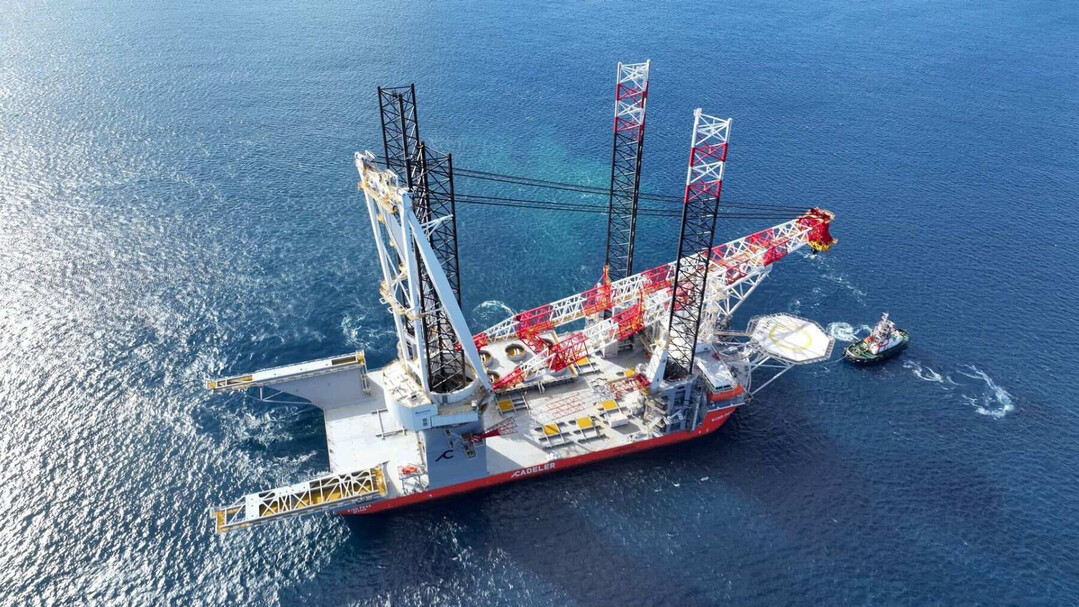
The world’s seas are undergoing a transformation, largely driven by the arrival of specialized, massive vessels that are key enablers of the global energy transition. Oceans, long associated with myth and mystery, are now viewed through a lens of respect, expectation, and immense potential, primarily as the next frontier for renewable energy. This monumental shift is accelerating with the deployment of cutting-edge machinery designed for the challenging task of installing giant offshore wind turbines.
The Offshore Wind Revolution's Behemoth
Following pioneering installations like Japan's giant sea turbines, the energy sector's focus has intensified on a new generation of vessels. These colossal ships are engineered to handle offshore wind turbine generators (WTGs) with capacities up to $20 text{ MW}$ in water depths often exceeding $80 text{ m}$.
A prime example of this engineering marvel is the Bo Qiang 3060, a state-of-the-art Chinese-built jack-up vessel that recently made waves with its arrival at the port of Las Palmas de Gran Canaria. Specifically designed for the transport and installation of large-scale offshore wind turbines in deep and demanding environments, its operational scale and technical capabilities position it as a critical player in the international expansion of offshore wind power.
Engineering for Stability and Scale
The vessel, which is one of the most advanced of its kind globally, operates as a self-elevating platform. It uses robust, extendable legs to penetrate or rest upon the seabed. A powerful mechanical or hydraulic system then lifts the entire deck out of the water, creating a stable, fixed working platform. This crucial feature neutralizes the destabilizing effects of waves and swell, enabling high-precision, safe lifting operations.
For the installation of the latest generation of offshore WTGs, which typically have power ratings between $15 text{ MW}$ and $20 text{ MW}$ and feature heavy, oversized components, jack-up platforms are indispensable. They allow for the precise and secure hoisting of structural elements to significant heights above the sea surface, simplifying assembly even in deep water.
The Bo Qiang 3060: A Closer Look
The Bo Qiang 3060 measures $133 text{ meters}$ in length and between $50$ to $53 text{ meters}$ in beam. It boasts a substantial variable deck load capacity of $11,000 text{ tonnes}$ across an impressive $4,800 text{ square meters}$ of deck space. Its most striking features include four massive steel jack-up legs, each $120 text{ meters}$ long and extendable up to $136 text{ meters}$, and a suite of powerful cranes, including a main crane with a colossal lifting capacity of $2,200 text{ tonnes}$ (the text mentions $295 text{ tonnes}$ and $49 text{ tonnes}$ for the auxiliary cranes). This makes it capable of installing the current and next generation of ultra-large turbines.
The deck space is strategically designed to maximize logistical efficiency, allowing it to carry, for example, 3 complete $16 text{ MW}$ WTGs or 4 complete $12 text{ MW}$ units in a single load. This high cargo capacity is crucial for reducing transit times and project costs. Furthermore, it is equipped with a Dynamic Positioning (DP2) system to maintain its position precisely before jacking up, and its design adheres to stringent safety and regulatory standards, including those for the challenging North Sea.
A Growing Fleet and Global Impact
The Bo Qiang 3060 is not an isolated case but part of a small, rapidly growing global fleet of specialized Wind Turbine Installation Vessels (WTIVs). Vessels like Cadeler's Wind Peak further exemplify this trend, capable of transporting even greater loads, such as five WTGs over $20 text{ MW}$ each per trip. The industry faces an imminent vessel shortage, highlighting the critical role these platforms play in meeting the world's ambitious renewable energy targets.
The rise of these vessels signifies more than just a technological leap; it represents a fundamental change in how humanity harnesses oceanic resources. While these platforms improve operational efficiency and mitigate human and material risks by offering stable working conditions, their proliferation also brings new considerations. The construction and operation of vast offshore wind farms—enabled by these ships—impact maritime traffic, navigation complexity, and the marine ecosystem.
In a key development highlighting the vessel's global significance, it was recently announced that the Bo Qiang 3060 was acquired by the Danish offshore wind contractor Cadeler, a leading name in the sector. The vessel, to be renamed Wind Keeper, is slated for upgrades to further enhance its capabilities for O&M (Operations and Maintenance) services and new installations in the $15 text{ MW}$ turbine segment, confirming its role in driving the long-term sustainability of the offshore wind sector across international waters.
The largest transformation of the world's seas is already underway, and its trajectory is directly linked to the capabilities and increasing numbers of these extraordinary, self-elevating, heavy-lift vessels. They are the essential tools building the $1.6 text{ to } 1.8 text{ terawatts}$ of offshore wind capacity forecast to be required by $2050$ to achieve global carbon neutrality goals.
[Copyright (c) Global Economic Times. All Rights Reserved.]




























